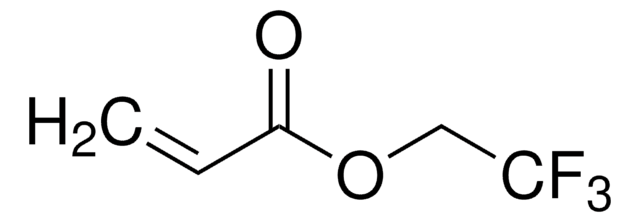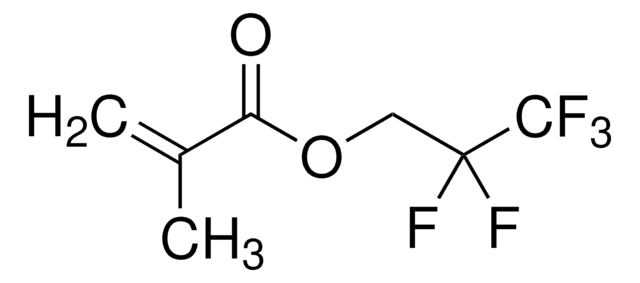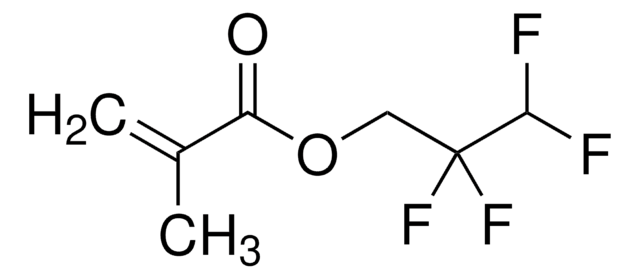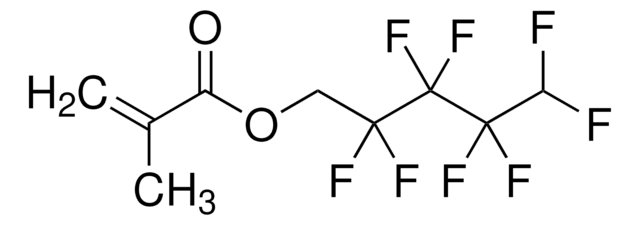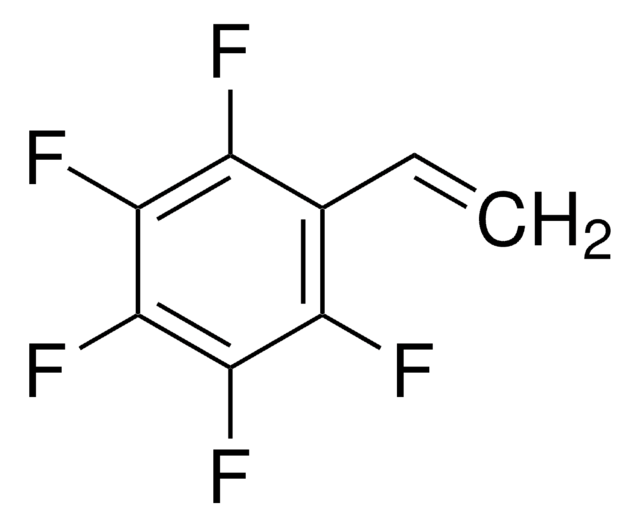373761
2,2,2-Trifluoroethyl methacrylate
contains 50-200 ppm MEHQ as inhibitor, 99%
Synonym(s):
2,2,2-Trifluoroethyl 2-methylprop-2-enoate
About This Item
Recommended Products
Assay
99%
form
liquid
contains
50-200 ppm MEHQ as inhibitor
refractive index
n20/D 1.361 (lit.)
bp
59 °C/100 mmHg (lit.)
density
1.181 g/mL at 25 °C (lit.)
storage temp.
2-8°C
SMILES string
CC(=C)C(=O)OCC(F)(F)F
InChI
1S/C6H7F3O2/c1-4(2)5(10)11-3-6(7,8)9/h1,3H2,2H3
InChI key
QTKPMCIBUROOGY-UHFFFAOYSA-N
Related Categories
General description
Application
Signal Word
Danger
Hazard Statements
Precautionary Statements
Hazard Classifications
Acute Tox. 3 Inhalation - Acute Tox. 3 Oral - Aquatic Chronic 3 - Flam. Liq. 2
Storage Class Code
3 - Flammable liquids
WGK
WGK 2
Flash Point(F)
62.6 °F - closed cup
Flash Point(C)
17 °C - closed cup
Personal Protective Equipment
Certificates of Analysis (COA)
Search for Certificates of Analysis (COA) by entering the products Lot/Batch Number. Lot and Batch Numbers can be found on a product’s label following the words ‘Lot’ or ‘Batch’.
Already Own This Product?
Find documentation for the products that you have recently purchased in the Document Library.
Customers Also Viewed
Articles
Polymeric materials, with unique refractive index properties, find applications in photonics and optical coatings for various devices.
Polymeric materials, with unique refractive index properties, find applications in photonics and optical coatings for various devices.
Polymeric materials, with unique refractive index properties, find applications in photonics and optical coatings for various devices.
Polymeric materials, with unique refractive index properties, find applications in photonics and optical coatings for various devices.
Our team of scientists has experience in all areas of research including Life Science, Material Science, Chemical Synthesis, Chromatography, Analytical and many others.
Contact Technical Service